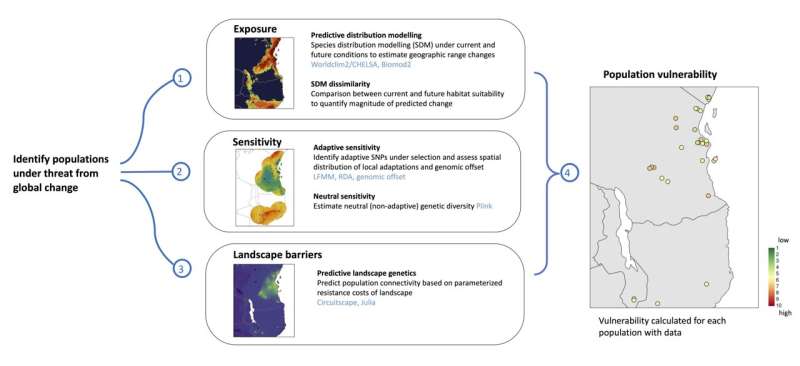A groundbreaking new tool, ‘Life on the Edge,’ is revolutionizing our understanding of how wildlife populations can adapt to the challenges of global climate change. By integrating genomic, geographic, and environmental data, this innovative toolbox provides crucial insights into population-level vulnerabilities, empowering researchers and conservation practitioners to prioritize their efforts and safeguard threatened species. Climate change and its far-reaching impacts on biodiversity have long been a pressing concern, and this new tool offers a promising solution to this complex challenge.

Unraveling the Genomic Puzzle of Climate Adaptation
The ‘Life on the Edge’ toolbox represents a significant breakthrough in climate change vulnerability assessments. Traditionally, such analyses have focused on the species level, failing to account for the crucial intraspecific variations within populations. This new framework, developed by an international team of researchers, addresses this limitation by leveraging population-level genomic data and spatially explicit models.
By combining genomic information with geographic and environmental data, the toolbox is able to provide a comprehensive understanding of a population’s ‘exposure,’ ‘neutral sensitivity,’ ‘adaptive sensitivity,’ and ‘spatial barriers’ to climate change. This multifaceted approach allows for a more nuanced and accurate prediction of population vulnerability, guiding targeted conservation efforts to combat the biodiversity crisis.
From Theory to Practice: Applying the ‘Life on the Edge’ Toolbox
To demonstrate the utility of the ‘Life on the Edge’ toolbox, the researchers applied it to three East African frog species and two European bat species. By analyzing the genomic, geographic, and environmental data for these populations, the researchers were able to generate detailed predictions of their vulnerability to climate change.
This information is invaluable for conservation practitioners, as it enables them to prioritize populations in need of immediate attention and intervention. By understanding the unique challenges faced by each population, stakeholders can develop tailored strategies to address the specific threats they face, ultimately improving the chances of safeguarding these species in the long term.
Empowering Conservation Efforts: The Versatility of ‘Life on the Edge’
The ‘Life on the Edge’ toolbox is designed to be highly flexible and adaptable, making it a powerful tool for researchers and conservation practitioners alike. Its standardized and modular construction allows for seamless integration of data from any species, enabling users to assess the population-level vulnerability of a wide range of wildlife.
This versatility is crucial in the face of the rapidly changing climate, as it allows stakeholders to stay abreast of the evolving threats and respond accordingly. By providing a comprehensive and holistic understanding of population vulnerability, ‘Life on the Edge’ paves the way for more effective conservation strategies, ultimately contributing to the preservation of biodiversity and the resilience of our natural ecosystems.
